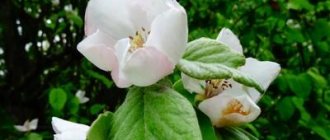Rose is the queen of the garden; hardly anyone will argue with this statement. This flower is a real decoration of the garden; it has been used in landscape design for several centuries. Hybrid tea varieties are distinguished by a classic appearance and large flower size. If you learn a few rules for caring for these flowers, you can get a luxurious flowerbed in your garden.
Hybrid tea varieties appeared in France. The first variety appeared in the 19th century, its name is “La France”, distinctive features: flower diameter up to 12 cm, a large number of petals and a delicate aroma. The variety was created after crossing a tea rose and a remontant rose.
The appearance of the flower was a real sensation; it was considered the most beautiful and hardy for its time. In the last century, many new varieties were developed, thanks to which the rose was recognized as the real queen of the garden.
To date, the number of varieties has exceeded 10 thousand. These flowers can be easily recognized by their particularly attractive bud shape; the central petals have the shape of a glass, and the side petals are bent to the side.
How to choose a seedling?
To successfully grow roses, it is important to start with the right seedling selection. A plant with a closed root system will take root easier and will not get sick, since its roots will be more protected and will not be damaged. Choose a variety adapted to the climatic conditions of your area.
For planting, a seedling 1-2 years old is best suited. At the time of planting, the plant should have 2-3 woody stems. If the root system is exposed, make sure it is sufficiently developed. The roots should not break; when bent, they should quickly restore their shape; they should be light in color and free from signs of disease. The plant itself must also be free of stains and damage. Normally, the root collar is about 1 cm in size.
If you notice that the root has dried out, you need to soak it in water. Keep it this way for about 3 hours.
Comments (2)
Natasha
04/20/2020 at 00:28 |
Can I make tea from this rose? Why is it called that way? It became very interesting, I once even heard that it is possible to make tea from some roses, I don’t know how realistic this is.Answer
Yulia Expert Plodogorod
06/05/2020 at 23:07 |
Hello, Natasha! Hybrid tea roses were bred artificially. To do this, breeders crossed tea and remontant varieties of these flowers, hence the name.
This experiment led to the emergence of one of the most popular groups of rose bushes, because they inherited many positive qualities from the original crops, such as long flowering and relative resistance to cold and disease.
As for the name of the tea rose, it appeared quite a long time ago because of the aroma of the flower, which was reminiscent of high-quality Chinese tea. In addition, the shape of the bud is similar to the container in which the drink was traditionally brewed in ancient times.
Hybrid tea roses are not suitable for preparing a traditional drink. To do this, it is better to use only varieties of tea roses directly. Raw materials of just such varieties are added to drinks, because the petals are rich in vitamins and other beneficial substances.
If plants are cultivated for other than decorative purposes, we recommend using as little chemical fungicides and insecticides as possible to control diseases and pests. It is better to use folk remedies for prevention, and in case of infection, purchase biological products.
Answer
How to choose a landing site?
Choosing a location is a very important point when landing. The wrong approach to this issue can destroy the rose even before it begins to grow. You need to plant the rose in a sunny, windless area. The flower does not tolerate drafts well, so they will be happy with the option of planting it near the wall. Moreover, this wall should protect them from the north side. If the groundwater is located high, then you need to choose a raised place for planting.
The soil needs to be loose, fertile, water and air should easily pass through it. The reaction is slightly acidic or neutral. It is important to clarify the type of reaction before planting in order to choose the right fertilizers and various additives. Sand and peat need to be added to the clay, and compost is added to the sandy substrate. To reduce acidity, chalk and ash are added.
Popular varieties
| Variety: Gloria Day Description: branched, vigorous bush 1.2 m tall, large flowers, 14 cm in diameter, bright yellow, with pink-red edges Peculiarities:
| |
| Variety: El Salvador Description: fast-growing rose about 80 cm high, double flowers 8-10 cm in diameter, white-cream with a greenish-yellow tint Peculiarities:
| |
| Variety: Happy Description: bush height about 90 cm, flowers 6-8 cm in diameter, light pink color Peculiarities:
| |
| Variety: Rose Wedding Piano Description: flower diameter 6-7 cm, densely double, creamy white, bush height 1-1.2m Peculiarities:
| |
| Variety: Blue Moon Description: bush 80 cm high, double flowers silver-lilac or lilac-purple Peculiarities:
| |
| Variety: Mount Shasta Description: large buds, white flowers, may have a greenish or cream tint, diameter 12 cm Peculiarities:
| |
| Variety: Bridal Description: round buds, flowers 10 cm in diameter, creamy pink center, edges have a greenish tint, bush height 80 cm Peculiarities:
| |
| Variety: Casanova Description: bush height 80-100 cm, large inflorescences with a diameter of 14-16 cm, bright yellow color Peculiarities:
| |
| Variety: Luxor Description: buds are densely double, blood red inside and whitish outside, flower diameter 12 cm Peculiarities:
| |
| Variety: Kronenburg Description: The height of the bush is about a meter, the flowers are velvety, large (13 cm in diameter), red. Peculiarities:
|
How to plant correctly?
The planting hole should be of such a size that the root can fit there freely, without bending. A crushed stone drainage is laid at the bottom; if the soil is light enough, drainage is not needed. The second layer is compost or humus; they need to be covered with soil to prevent contact with the soil. A seedling is placed on a small mound of earth; after the roots are distributed, the hole is sprinkled halfway with soil. Next, water is poured in in small portions; it should take about a bucket of water per seedling. After this, you can add the last soil, plunging the root system into the ground no more than 3 cm. The last stage is mulching the tree trunk circle. You can use peat and sawdust. After planting, provide the young plant with proper care.
Reviews from gardeners
Tatiana:
Kronenburg is a gigantic flower, the buds are full, there are a lot of petals, I never get sick at all.
Source: forum-flower.ru
Vyacheslav
Variety Gloria Day. In general, a very beautiful variety (from my point of view), the downside is that it fades quickly and lasts in a vase for a maximum of 3 days. But the size of the flower is gorgeous.
Source: forum-flower.ru
How to care?
Caring for roses is not as difficult as it might seem. Watering, fertilizing and pruning are almost all that is required. Sometimes, if the bush is very stretched, it may need support. Also in some cases it is necessary to deal with pests.
Once you have planted a seedling, you need to water it at least 3 times a week. As soon as you notice new shoots on the flower, watering can be reduced, allowing the top layer of soil to dry completely. As soon as the rose begins to form buds, it needs to be watered again a little more often than usual. Watering is carried out in the evening, combining them with loosening the soil.
In the first year after planting, there is no need to fertilize the rose, but then you need to fertilize it four times: the first one occurs at the beginning of spring. Both organic and mineral compounds are added; when a bud is formed, manure will be required; immediately before flowering, ready-made mineral fertilizers can be used, and for wintering, humus mixed with compost is added.
Without fertilizing, a rose may well exist, but the flowers will be smaller and flowering will be shorter.
The rose is pruned for sanitary purposes, as well as to form a bush. Sanitary pruning is carried out in spring and autumn. At this time, diseased, frostbitten or dried shoots are removed. Formative pruning in the fall forms the shape of the bush, in the spring it stimulates the growth of shoots, and after flowering it prevents the rose from wasting extra energy on forming fruits. In the fall, you cannot prune a rose before November to prevent the growth of new shoots.
Trimming
Removing some of the shoots plays an important role in the proper maintenance of the rose. There are several trimming options:
- Strong - involves removing most of the shoot. As a result, only 3-4 buds remain. This option allows you to get large flowers in smaller quantities. The beginning of flowering is postponed to a later time.
- Weak - involves pruning the damaged or frostbitten upper part of the shoot. In this case, flowering is early, there are many buds, but the flowers are small.
- Spring is the most important. It is performed when the kidneys reach a size of 5-8 mm. On low-growing varieties, 3-4 buds are left with a total shoot length of 15-20 cm. On tall bushes, 8 buds remain on a total length of 30 cm.
- Summer - performed when the plant has bloomed. Withered buds and a small part of the shoot are cut off. In this case, the plant’s strength is not wasted on the formation of fruits, which will allow for more abundant flowering the next season.
- Autumn - necessary as preparation for the winter period. It involves removing unripe and damaged stems. This is done carefully so as not to cut off excess.
Important! All trimmed material is placed away from the bushes and burned in case pathogens are found there.
How to propagate a rose?
The most popular method of propagation is cuttings. Semi-lignified cuttings are suitable for this; they are cut after the first flowering. Cuttings are taken from the very heart of the bush. Their length is about 6 cm. The lower cut should be made at an angle, it should be located under the bud, and the upper one should be above the bud. The leaves are shortened, they are cut by mistake, this interferes with rooting. Before planting, cuttings can be soaked in any solution to stimulate root growth.
Future bushes can be planted directly on the street; a mixture of sand and peat is used as soil. The location must be chosen so that the sun hits the sprouts for about half the day. Be sure to plant at an angle. Planting depth is 2 cm. The cuttings are placed under plastic bottles and watered regularly. Roots appear in about a month.
If the bush is mature, then the plant can be propagated by division. This procedure is carried out in the spring. After planting the divisions, the shoots on them are shortened to 3 buds.
Description of the plant
Hybrid tea is a class of varietal roses that are obtained by crossing remontant and tea plants. These aristocrats are distinguished by high quality buds and continuous flowering throughout the entire growing season. On average, plants are about 65 cm high, tall specimens sometimes reach one and a half meters in size. Roses can grow in a standard culture, form spreading or narrow pyramidal bushes. The leaves are of various shades of green, some are dense and delicate, matte and shiny.
The diameter of fragrant double flowers is usually from 10 to 14 cm. Depending on the variety, they are arranged singly or collected in inflorescences. Petals are of very different colors and textures. Flowering begins around mid-June and continues until frost.
22
Pests and diseases
Rose often suffers from fungal diseases. Their cause is excessive humidity. To prevent this, you need to plant bushes, maintaining sufficient distance between them, and moderate watering is also necessary. Powdery mildew, gray rot and other diseases may appear on the leaves, the main symptom of which is spots on the buds and leaves. For treatment, you need to use fungicides that treat not only the plants themselves, but also the soil around them.
Pests can also appear on roses. The most common are spider mites and aphids. Leaf rollers and various caterpillars are also found. As soon as you notice damage to the plant by these insects, immediately treat the surface with insecticides. Many pests reproduce very quickly and cause enormous damage to plants. Another common problem is root nematode, its symptoms are drying of leaves and wilting of shoots. Dig up the plant, wash its roots and treat it with nematode repellent. After which you can plant it in another place.
Preparing tea hybrids for winter
To save the plant from freezing, it is necessary to cover the rose bushes for the winter. The lower buds of the plant are sprinkled with a layer of soil, and on top of the soil the root zone is mulched with sawdust or leaf litter. Small bushes are covered with an inverted bucket, on which a weight is placed so that the wind does not knock down the shelter. A metal or wooden frame is built around a large plant, the internal space between the frame and the plant is filled with dry leaves, spruce branches or sawdust, and a covering material is placed on top of the frame so that air is supplied to the plant. The main thing is to prevent the bush from rotting in winter.
In the photo: Sheltering roses for the winter
Hybrid tea roses are very responsive to care, and the more time you devote to these plants, the more lush, bright and long-lasting their flowering will be.











